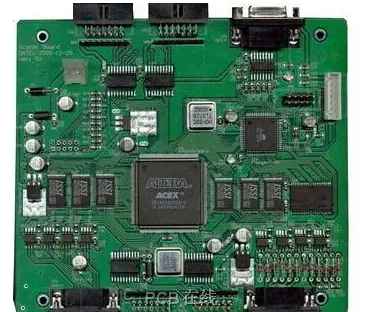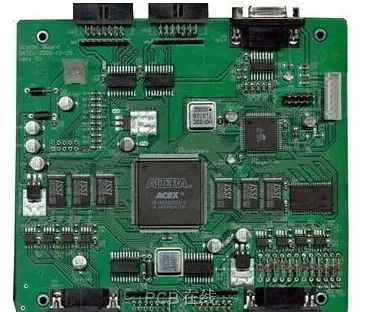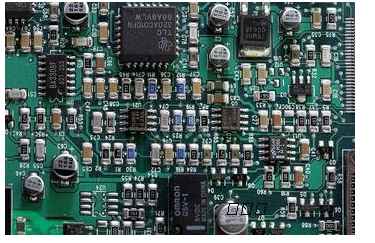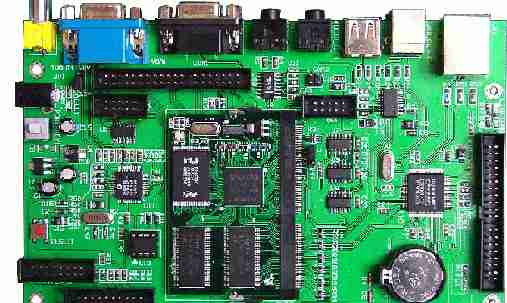
For electronic devices, a certain amount of heat will be generated during work, so that the internal temperature of the device will rise rapidly, if the heat is not dissipated in time, the device will continue to heat up, the device will fail due to overheating, and the reliable performance of the electronic device will decline. Therefore, it is very important to perform a good heat dissipation treatment on the circuit board. The heat dissipation of the circuit board is a very important link.
1.Heat dissipation through the PCB board itself
At present, the widely used PCB board is copper-coated/epoxy glass cloth substrate or phenolic resin glass cloth substrate, and there is a small amount of paper-based copper-coated sheet. Although these substrates have excellent electrical properties and processing properties, they have poor heat dissipation, and as a heat dissipation pathway for high-heating components, they can hardly be expected to conduct heat by the PCB itself, but to dissipate heat from the surface of the component to the surrounding air. However, as electronic products have entered the era of component miniaturization, high-density installation, and high-heat assembly, it is not enough to rely only on the surface of a very small surface area to dissipate heat. At the same time, due to the large use of surface mounted components such as QFP and BGA, the heat generated by the components is transmitted to the PCB board in large quantities, therefore, the best way to solve the heat dissipation is to improve the heat dissipation capacity of the PCB itself in direct contact with the heating element, which is transmitted or distributed through the PCB board.
2. High heating device with heat sink, heat conduction plate
When the PCB has a small number of devices with large heat (less than 3), the heat sink or heat conduction tube can be added to the heating device, and when the temperature can not be lowered, the radiator with a fan can be used to enhance the heat dissipation effect. When the amount of heating devices is large (more than 3), a large heat shield (plate) can be used, which is a special radiator customized according to the position and height of the heating device on the PCB board, or a large flat radiator to cut out the height of different components. The heat shield is fastened on the component surface as a whole, and the heat is dissipated by contact with each component. However, due to the poor consistency of the components during installation and welding, the heat dissipation effect is not good. Usually add a soft thermal phase change thermal pad on the surface of the component to improve the heat dissipation effect.
3. For devices that use free convection air cooling, it is best to arrange integrated circuits (or other devices) by longitudinal length or by transverse length.
4. Adopt reasonable cable design to realize heat dissipation
Since the resin in the plate has poor thermal conductivity, and the copper foil line and hole are good conductors of heat, increasing the copper foil residual rate and increasing the heat conduction hole are the main means of heat dissipation. To evaluate the heat dissipation capacity of PCB, it is necessary to calculate the equivalent thermal coefficient of PCB insulating substrate, which is composed of various materials with different thermal conductivity.
5. The devices on the same PCB board should be arranged as far as possible according to the size of their heat output and the degree of heat dissipation, and the devices with small heat output or poor heat resistance (such as small signal transistors, small-scale integrated circuits, electrolytic capacitors, etc.) are placed at the most upstream (entrance) of the cooling air flow. Devices with large heat generation or good heat resistance (such as power transistors, large-scale integrated circuits, etc.) are placed at the downstream of the cooling stream.
6. In the horizontal direction, the high-power device is arranged as close as possible to the edge of the PCB board in order to shorten the heat transfer path; In the vertical direction, the high-power devices are arranged as close as possible to the top of the PCB board in order to reduce the impact of these devices on the temperature of other devices when they work.
7. The heat dissipation of the PCB board in the equipment mainly depends on the air flow, so the air flow path should be studied in the design, and the device or printed circuit board should be reasonably configured. When the air flows, it always tends to flow where the resistance is low, so when configuring the device on the printed circuit board, it is necessary to avoid leaving a large airspace in a certain area. The configuration of multiple printed circuit boards in the whole machine should also pay attention to the same problem.
8. The device that is more sensitive to temperature is best placed in the lowest temperature area (such as the bottom of the device), do not put it above the heating device, and multiple devices are best staggered on the horizontal plane.
9. Arrange the device with the highest power consumption and the greatest heat dissipation near the best location for heat dissipation. Do not place high heating devices in the corners and edges of the PCB board, unless there is a cooling device near it. When designing the power resistance, choose a larger device as much as possible, and adjust the PCB layout so that there is enough space for heat dissipation.
10. Avoid the concentration of hot spots on the PCB, distribute the power evenly on the PCB board as much as possible, and maintain the uniform and consistent temperature performance of the PCB surface. It is often difficult to achieve strict uniform distribution in the design process, but it is necessary to avoid areas with too high power density to avoid hot spots that affect the normal operation of the entire circuit.
Strength guarantee
▪SMT workshop: With imported SMT machines, optical inspection equipment, can produce 4 million points per day. Each process is equipped with QC personnel, who can keep an eye on product quality.
▪DIP production line: there are two wave soldering, of which there are more than 10 old employees who have worked for more than three years. The workers have high proficiency and can weld all kinds of plug-in materials.
2. Quality assurance, cost-effective

▪ High-end equipment can be attached to precision shaped parts, BGA, QFN, 0201 materials. Also can be template patch, loose material hand. Sample and size batch can be produced, proofing from 800 yuan, batch 0.008 yuan/point, no start-up fee.
3. Rich experience in SMT and welding of electronic products, stable delivery
▪ Accumulated service for thousands of electronic enterprises, involving many types of automotive equipment and industrial control motherboard SMT processing services, products are often exported to Europe and the United States, quality can be affirmed by new and old customers.
▪ Punctual delivery, normal 3-5 days after complete materials, small batches can also be expedited on the same day.
4. Strong maintenance ability, perfect after-sales service
▪ Experienced maintenance engineers can repair all kinds of patch welding caused by bad products, to ensure the connectivity of each circuit board. 24-hour customer service staff is ready to respond, the fastest to solve your order problems.







